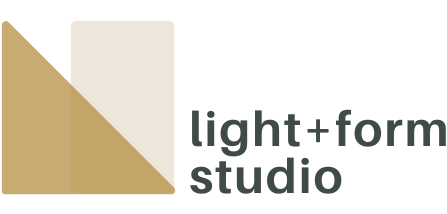Why are Lighting Photometrics Important?
Photometric calculations are a crucial aspect of lighting design that involves the measurement and analysis of the distribution of light emitted from a light fixture.
It provides detailed information about how a luminaire (lighting fixture) distributes light in space, including its intensity, direction, and beam spread. Understanding photometric data is essential for architects, lighting designers, and engineers as it helps them make informed decisions about fixture selection, placement, and overall lighting design.
Important benefits of professional & accurate photometrics include:
Accurate Lighting Analysis:
Photometric data allows designers to predict and visualize how light will behave in a given space. By using photometric files provided by manufacturers, lighting designers can simulate the lighting conditions and evaluate the illuminance levels on surfaces, ensuring that the intended lighting requirements are met.
Optimal Fixture Placement
Photometrics helps determine the most suitable location and orientation of lighting fixtures. By analyzing the light distribution patterns, designers can position fixtures to achieve uniform illumination across the space, avoiding hot spots and dark areas, and creating uniformity or visual emphasis where desired.
Compliance with Standards and Regulations
Many building codes and industry standards specify lighting requirements for various spaces. Photometric data helps ensure that the lighting design meets these standards, such as illuminance levels for offices, parking lots, and task-oriented areas.
Highlighting Points of Interest
By understanding the light distribution of fixtures, designers can select and arrange luminaires more efficiently. This enables the use of fewer fixtures while maintaining adequate lighting levels, resulting in reduced energy consumption and lower operating costs.
Energy Efficiency
By understanding the light distribution of fixtures, designers can select and arrange luminaires more efficiently. This enables the use of fewer fixtures while maintaining adequate lighting levels, resulting in reduced energy consumption and lower operating costs.
Minimizing Glare
Glare is a common problem in lighting design, causing discomfort and visual impairment. Photometric data helps identify potential glare sources, allowing designers to take appropriate measures to minimize or eliminate glare through proper shielding and fixture selection.
Enhancing Aesthetics
Photometric analysis aids in creating visually pleasing environments. Designers can use photometric data to accentuate architectural features, artwork, or specific elements in the space, achieving the desired visual effect.
Outdoor Lighting Design
For outdoor spaces, such as streets, parks, and sports facilities, photometric data is instrumental in ensuring proper illumination for safety and security. It helps avoid light pollution and ensures minimal spill light into neighboring areas.
Product Selection and Comparison
Lighting manufacturers provide photometric data for their fixtures, allowing designers to compare different products and choose the ones that best suit the project's requirements.
In summary, photometrics play a fundamental role in lighting design by providing essential information to create effective, energy-efficient, and visually appealing lighting solutions.
Its use in lighting calculations and analysis helps designers achieve the desired lighting outcomes while meeting industry standards and ensuring occupant comfort and well-being. By leveraging photometric data, lighting professionals can optimize their designs and deliver high-quality lighting experiences to their clients.
Remember, these considerations should be tailored to the specific needs and goals of the space. Collaboration with lighting designers and architectural professionals helps ensure a successful lighting design solution!
We’re here to help! Light + Form Studio offers services tailored to your specific project, to help you create a well-designed, visually appealing, functional space.
-G
Light + Form Studio is a woman-owned, boutique lighting design and consulting studio serving the architects and designers of Greater Portland, Maine and beyond.





